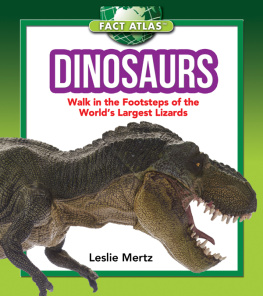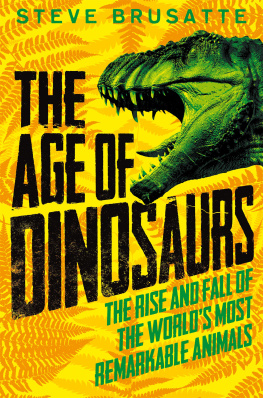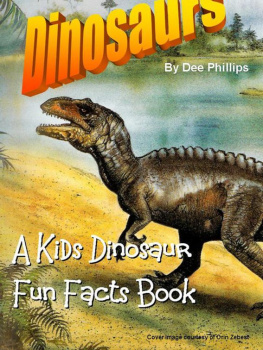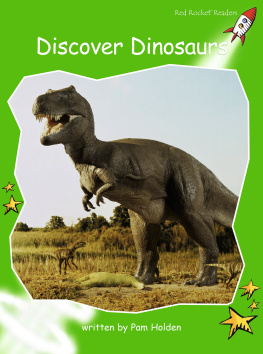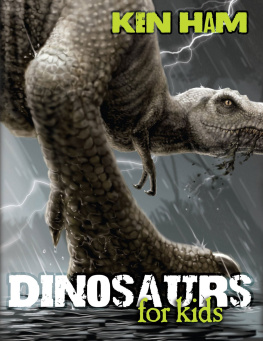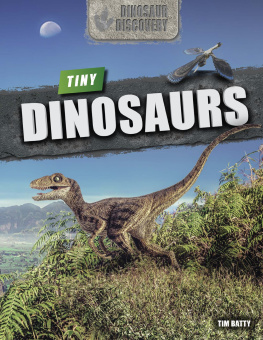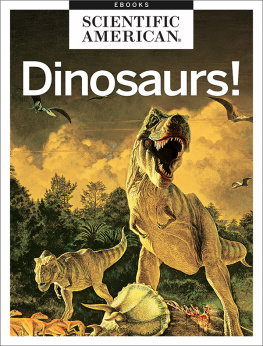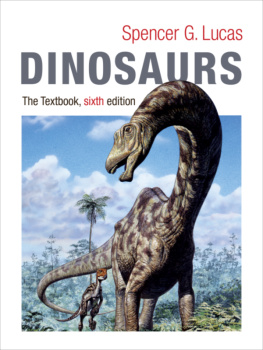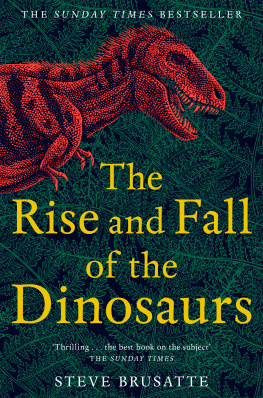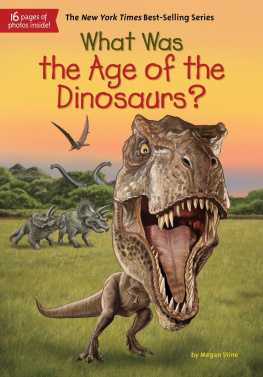Copyright 2015 by Leslie Mertz
All rights reserved. No part of this book may be reproduced in any manner without the express written consent of the publisher, except in the case of brief excerpts in critical reviews or articles. All inquiries should be addressed to Sky Pony Press, 307 West 36th Street, 11th Floor, New York, NY 10018.
Sky Pony Press books may be purchased in bulk at special discounts for sales promotion, corporate gifts, fund-raising, or educational purposes. Special editions can also be created to specifications. For details, contact the Special Sales Department, Sky Pony Press, 307 West 36th Street, 11th Floor, New York, NY 10018 or .
Sky Pony is a registered trademark of Skyhorse Publishing, Inc., a Delaware corporation.
Visit our website at www.skyponypress.com.
10 9 8 7 6 5 4 3 2 1
Manufactured in China, March 2015
This product conforms to CPSIA 2008
Library of Congress Cataloging-in-Publication Data
Mertz, Leslie A., author.
Dinosaurs / Leslie Mertz.
pages cm
Audience: Ages 8-12
Audience: Grades 4 to 6
Includes bibliographical references and index.
ISBN 978-1-63220-436-3 (hc : alk. paper)
1. Dinosaurs--Juvenile literature. I. Title.
QE861.5.M47 2015
567.9--dc23
2015006634
Cover design by Georgia Morrissey
Cover photo credit: Thinkstock
Ebook ISBN: 978-1-63220-819-4
Contents
In the Footsteps of Dinosaurs

A s you step into your backyard, onto a ball field, or along a trail in a nearby forest, you might be setting down your foot in the same place that a dinosaur once did. If you happen to live in the eastern United States, that dinosaur could have been the 25-foot-long duck-billed dinosaur called Hadrosaurus or the 60-foot-long and 30-foot-tall Astrodon , a plant eater that had a heavy body and walked on four legs. Maybe youve walked in Mongolias Gobi Desert, where the swift little predator Velociraptor roamed, or perhaps youve been to Patagonia in South America, where the mightiest beasts ever to walk the Earth shook the ground with massive footsteps. The fact is, you may be walking in the footsteps of dinosaurs on all of the continents. That includes Antarctica, where, despite the frigid landscape there now, scientists have already discovered eight species of dinosaurs.
What an amazing place Earth was in the days of these mighty reptiles! While standing here today, we can only imagine the scene: mammoth plant-eating dinosaurs, some probably in herds, grazing in a forest-surrounded meadow, while packs of small but fast and smart meat-eating dinosaurs looked for an opportunity to attack... and the whole scene turned upside down as a bloodthirsty predator like Tyrannosaurus rex burst out of the forest and charged! Welcome to the world of the dinosaurs, vanished now but for the efforts of scientists, museums, and your own imagination.

What's a Dinosaur?

Y ou probably know what reptiles are: snakes, lizards, crocodiles, and turtles are all reptiles. Dinosaurs were reptiles, too, and had a reptiles scaly skin and other reptilian features. But dinosaurs belonged to one particular group of reptiles. Even though scientists only have fossils (living matter turned into rock or which left an impression in rock) to identify dinosaurs, they have been able to find clear differences between dinosaurs and other reptiles.
One of the most obvious differences is the way dinosaurs walked. The vast majority of dinosaurs walked on legs right under their bodies. Because of this, most of the four-legged dinosaurs walked more like horses, with the legs below the body, than like crocodiles, with their legs spread out to the sides. The two-legged dinosaurs also walked on legs under their bodies, like ostriches.
WHATS IN A NAME?
THE ANIMALS THAT ARE ALIVE TODAY often have both common names and scientific names: black bear is a common name, and Ursus americanus is the animals scientific name. We know dinosaurs only by their scientific names, which are typically written in italics. The scientific name usually comes from the Latin or Greek word for a particular feature of the animal, from the place where it was found, or from a person who was involved in the discovery. As an example, Edmontosaurus is a combination of Edmonton, Canada, where the creatures fossils were uncovered, and saurus , the Greek word for lizard.
DID YOU KNOW?
Many scientists believe that dinosaurs are the ancestors of birds. If thats the case, not all dinosaurs became extinct 65 million years ago. Some survived to give rise to birds, and birds are indeed modern-day dinosaurs!

An ostrichs two legs are directly beneath its body (unlike a turtle s, which splay out to the sides). Most dinosaurs stood the same way as ostriches.

A turtle is a kind of reptile, but it isn t a dinosaur. All dinosaurs were reptiles, but not all reptiles are dinosaurs.

Some dinosaurs had feathers, although none could fly like modern birds.
Bird and Lizard Hips
Scientists divide dinosaurs into two big groups. The species in one group have so-called bird hips" and are known as the ornithischians (pronounced orni-thisk-ians). Those in the other group have lizard hips and are called saurischians (sore-isk-ians). The difference between the two groups is the way the hip bones fit together. Meat-eating dinosaurs, such as the famous Tyrannosaurus and Velociraptor , are lizard-hipped dinosaurs, and so are some of the big, long-necked plant eaters like Apatosaurus . Meat-eating saurischians are together called theropods (thare-o-pods), and plant-eating saurischians are called sauropods (sore-o-pods). All of the bird-hipped dinosaurs were plant eaters. Ornithischia includes species such as Triceratops and Stegosaurus .

The two dinosaur types are distinguished by their hip bones: the ilium, ischium, and pubis. The pubis of saurischians like Tyrannosaurus (above) points down and forward. In ornithischians like Stegosaurus (below), it points backward and lies against the ischium.

The Age of Dinosaurs

A bout 250 million years ago, something happenednobody knows whatthat caused nine of every ten plant and animal species to die off.

